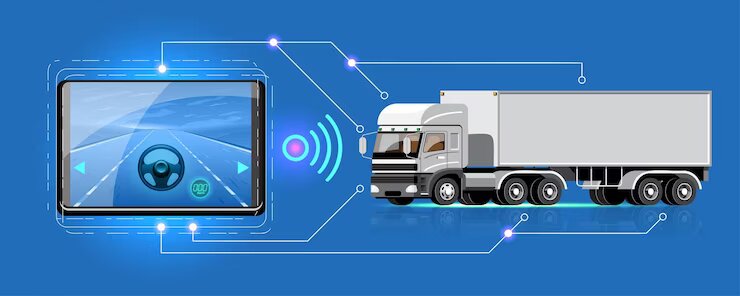
Are you ready for a ride into the future of transportation? Buckle up and hang on tight as we take you on a journey through the latest breakthroughs in transport technologies. From self-driving cars to hyperloops, the possibilities are endless! Join us as we explore how these innovations will not only revolutionize our daily commutes but also have significant impacts on society and the environment. So, fasten your seatbelts – it’s time to explore what’s driving tomorrow’s world.
Self-driving cars
The race to develop self-driving cars is on, with tech giants and car manufacturers alike vying for a piece of the pie. But what exactly are self-driving cars, and how do they work?
Self-driving cars are also known as autonomous or driverless vehicles. These are vehicles in which the onboard computer system is capable of navigating and driving the car without human intervention.
There are various levels of automation when it comes to autonomous vehicles. Level 5 is full automation, where the vehicle can drive itself in all conditions and environments, without any need for human input. We’re not quite there yet, but many companies are working hard to achieve this level of automation.
At present, most self-driving cars on the road are at Level 2 or 3; they can perform some driving tasks autonomously but still require a human driver to be present and pay attention at all times.
How do autonomous vehicles work? The technology behind driverless cars makes use of sensors, radar, GPS, and artificial intelligence (AI) to navigate their surroundings. Lidar (light detection and ranging) is often used too; this uses lasers to create a 3D map of the environment around the car.
With all this data, the computer system aboard the vehicle can build up a clear picture of its surroundings and make decisions accordingly. For example, it can identify obstacles in its path and plan a safe route around them.
Self-driving cars are still
Hyperloops
In recent years, there has been a lot of excitement around the potential of new transport technologies to revolutionize the way we travel. From self-driving cars to hyperloops, there are a number of promising breakthroughs that could have a major impact on the way we get around in the future.
One of the most hyped technologies is the hyperloop. This is a high-speed transportation system that uses magnets and vacuum tubes to send passengers or cargo at speeds of up to 760 mph. The idea was first proposed by Elon Musk in 2013, and since then there have been a number of companies working on developing it.
There are a number of potential advantages of the hyperloop over traditional forms of transportation. Firstly, it could be much faster than existing train or plane journeys. Secondly, it would be much more energy-efficient, as there would be no friction from air resistance. Finally, it has the potential to be much cheaper to build and operate than other high-speed transportation options.
However, there are also some challenges that need to be overcome before the hyperloop can become a reality. Firstly, it is still in the early stages of development, so there is a long way to go before it is ready for commercial use. Secondly, some experts have raised concerns about its safety and feasibility. Nonetheless, the hyperloop remains one of the most intriguing transport technologies currently under development, and it will be interesting to see how it progresses in the coming years.
Electric planes
Electric planes are one of the latest breakthroughs in transport technologies. They offer a more environmentally friendly and efficient way to travel, and have the potential to revolutionize air travel.
Electric planes are powered by electric motors, which are significantly more efficient than traditional internal combustion engines. This means that electric planes generate far less pollution and emissions than their fossil fuel-powered counterparts. Electric planes also tend to be quieter than their traditional counterparts, making them ideal for use in urban areas.
One of the key benefits of electric planes is their efficiency. Electric motors are able to convert a higher proportion of energy into useful work than internal combustion engines, meaning that electric planes can travel further on the same amount of power. This makes them ideally suited for long-distance travel, such as between cities or across countries.
Another key benefit of electric planes is their environmental friendliness. Electric motors produce zero emissions, meaning that electric planes generate no pollution or greenhouse gases. This makes them a much more sustainable option for air travel than traditional fossil fuel-powered aircraft.
Electric planes are still in the early stages of development, but they hold immense promise for the future of air travel. They offer a cleaner, more efficient alternative to traditional aircraft, and have the potential to revolutionize the way we travel by air.
Flying cars
The idea of flying cars has been around for decades, and while the technology has progressed significantly, there are still many challenges to overcome before we see widespread adoption. The biggest obstacle is likely the cost, as current prototypes are prohibitively expensive for most people. Additionally, there are concerns about safety and regulation, as flying cars would introduce a whole new category of vehicles to the already congested airspace.
That said, there are a number of companies working on flying car technologies and there have been some promising developments in recent years. In 2018, Airbus announced its plans for an autonomous flying car called Vahana which is currently in development. And in 2019, Hyundai unveiled its own concept for a flying car called Elevate which is designed to be used in search and rescue missions.
With the rapid advancements in technology, it’s not impossible to imagine a future where flying cars are commonplace. But whether or not that future comes to fruition remains to be seen.
Conclusion
Transport technologies have come a long way in the last few decades, and they are continuing to advance at an impressive rate. Self-driving cars, hyperloops, and flying cars are just some of the advances that we’re seeing today. As technology continues to improve, it will open up new possibilities for transport around the world. We can only imagine what other breakthroughs we’ll see in this exciting field!










